Sinèrgics is the first space of municipal coworking made up of professionals committed with the community of Baró de Viver, the area where it’s situated.
The project by CaSA had to translate into spaces the laudable target of the initiative, transforming five never used, neglected, bricked and empty premises on the ground floor of social housing blocks into attractive, vibrant workspaces where small companies would want to set up their offices.
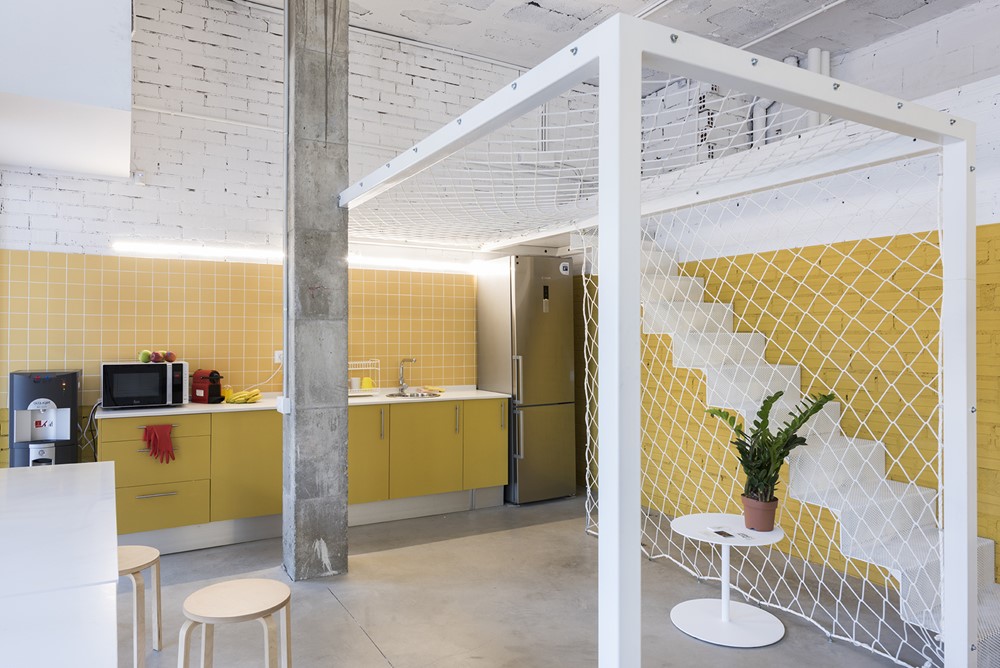






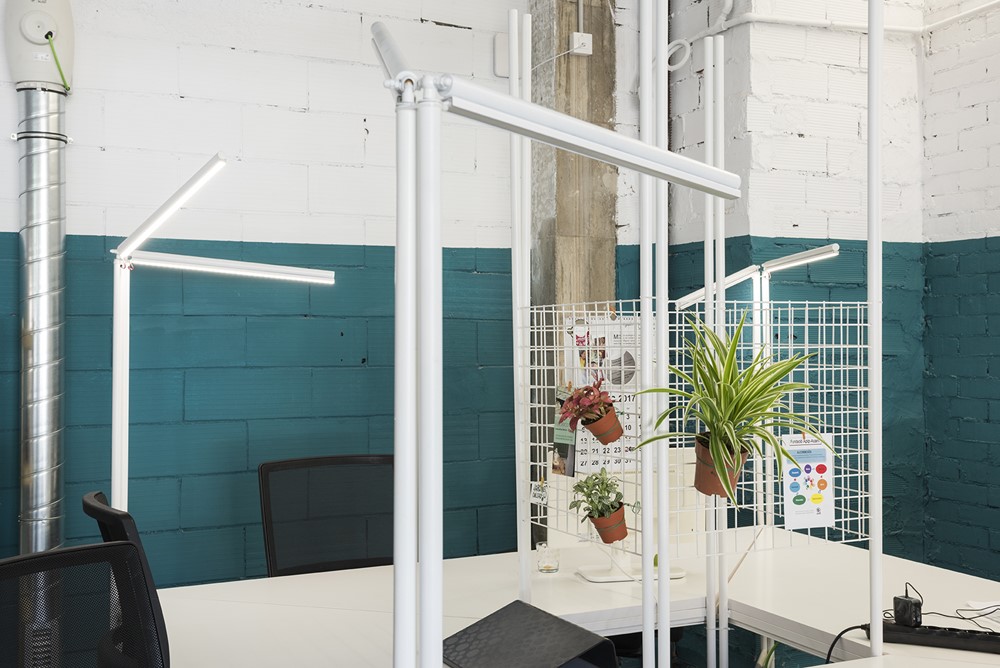




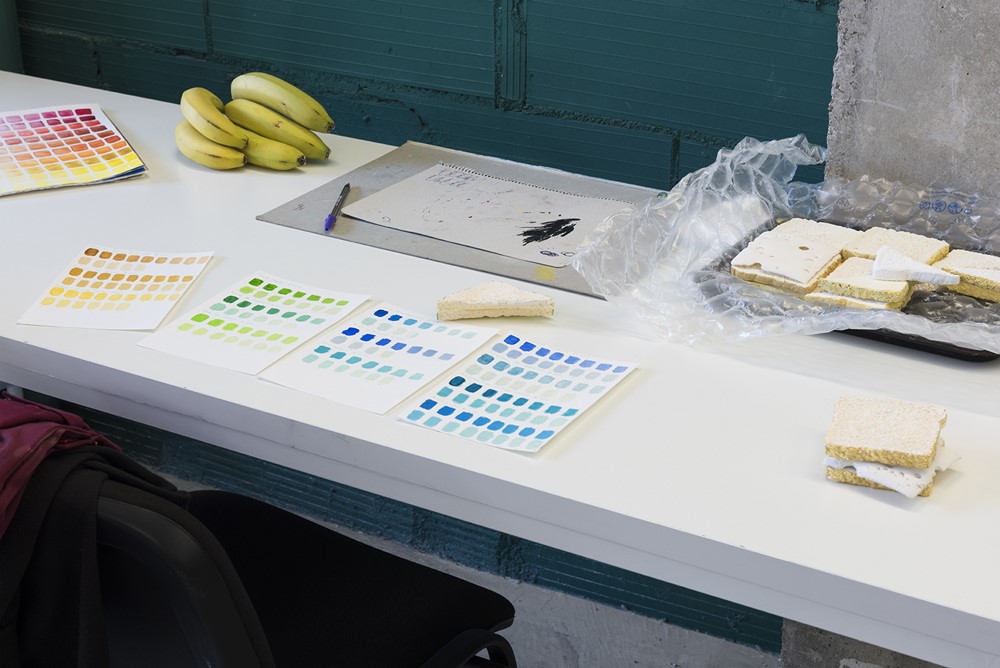

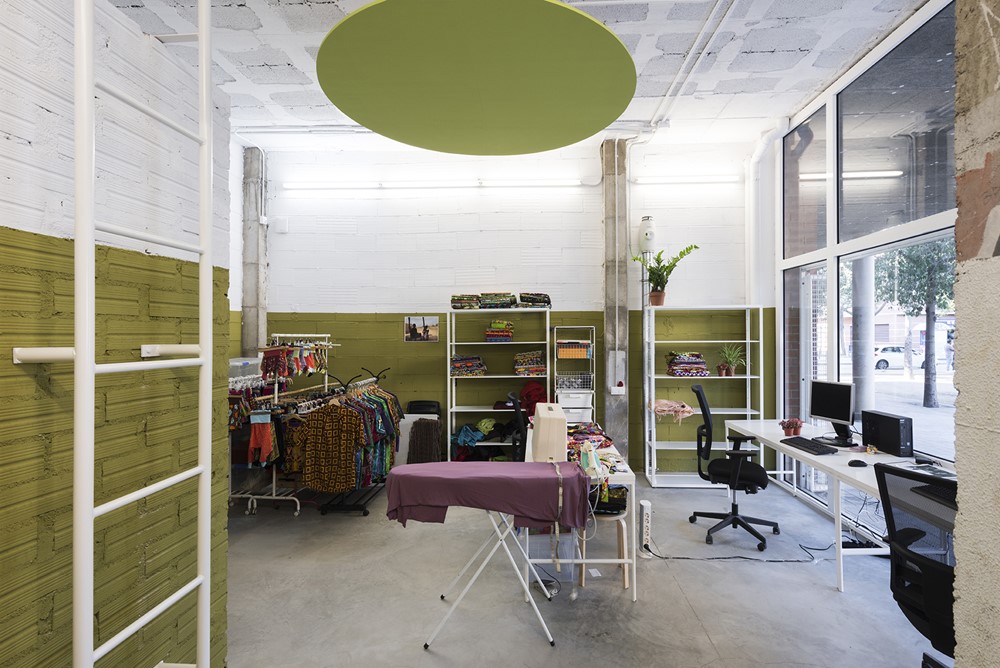




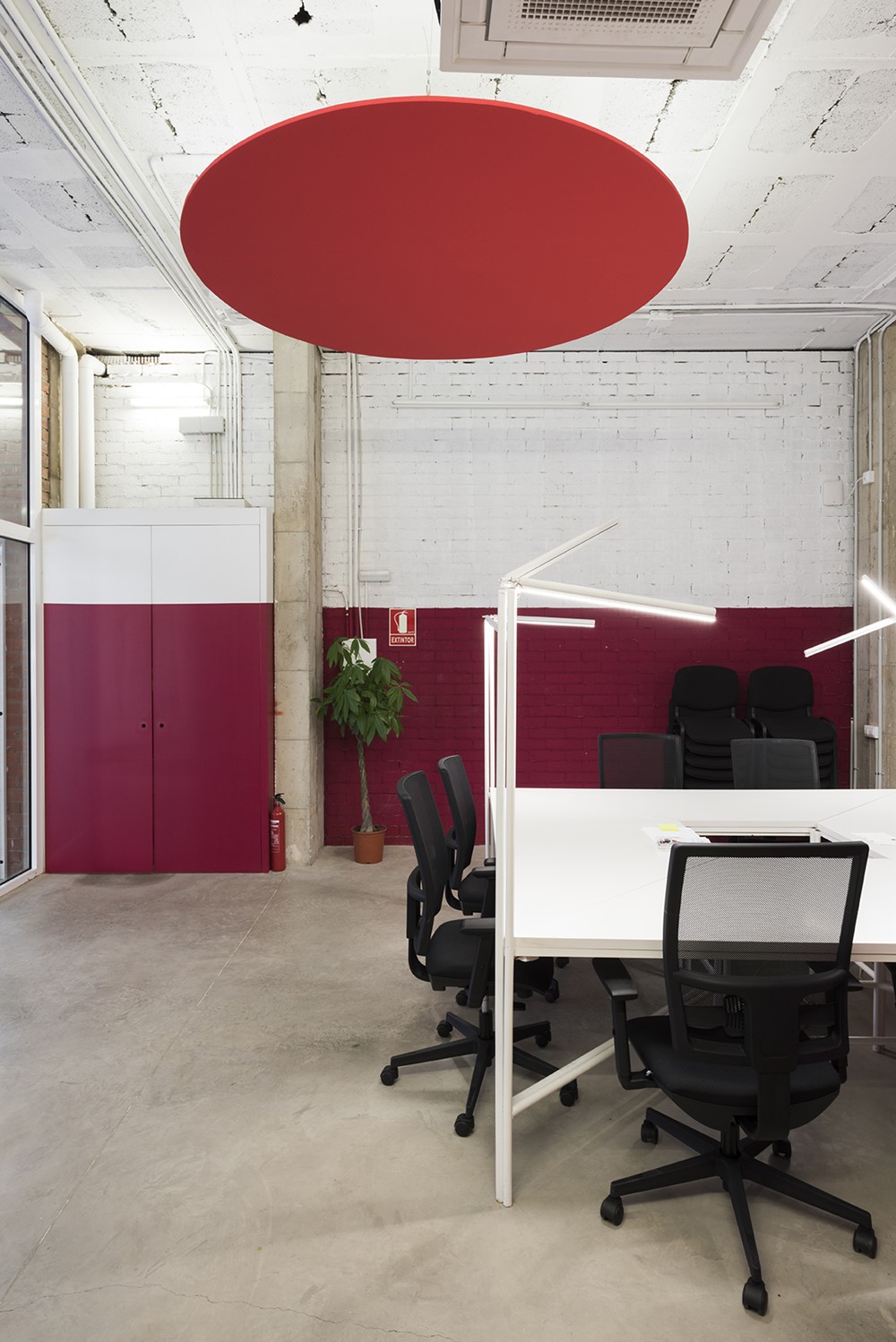





Budget was tight, the project had to make the most of the spaces, give visibility to the coworking onto the neighbourhood, communicating openness, still keeping the safety of its contents in an area with security problems.
The floor to ceiling windows were thought to have maximum visibility from the street, maximize the light and views on the small garden facing the spaces, while playing with the white net mesh shutters as the lighter, less aggressive mean to keep the coworking safe when closed.
Every space was given a distinctive colour and can host various professionals.
Two of five spaces were unified in one bigger, central one that incorporates the kitchen communal area.
The white mesh theme of the window shutters, reappears on the inside in the yellow kitchen tiles and kitchen space that features a net mezzanine – reachable through a perforated metal stairs ramp – a giant hammock that works as a relax area for the coworkers. This was the result of the need to find a relax area having little or none space for it. We opted to have it light and suspended instead of occupying part of the kitchen space. One can contemplate the trees outside whilst hanging there.
The five colours that are distinctive to each area were painted directly on the existing brick walls and on the volumes of toilets, as a mean to contain costs, still retaining the nature of the spaces and playing with rough textures. The upper part is painted white to reflect the light coming from the big windows around the offices. This visually creates a horizon and allows the use of colour without it being excessive.
Concrete pillars were left unpainted and rough, carrying writings and marks of the spaces previous life, in stark contrast with the new image and use of the spaces.
Photography by Roberto Ruiz



